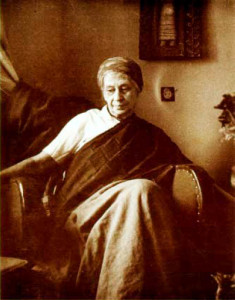 What a vision she must have been, this exotic, serene, sari-clad woman who spoke fluent Polish and cared so much about them. She was known as Umadevi, a name given to her by her friend, Mahatma Gandhi, but she was Wanda Dynowska when she arrived in India from Poland in 1935.
What a vision she must have been, this exotic, serene, sari-clad woman who spoke fluent Polish and cared so much about them. She was known as Umadevi, a name given to her by her friend, Mahatma Gandhi, but she was Wanda Dynowska when she arrived in India from Poland in 1935.
In 1942, Dynowska/Umadevi was instantly drawn to the children from her beloved homeland who had found shelter in her equally beloved India. She shared with them what she had: serenity, a dedication to peace and respect for all cultures, and her knowledge of the land and the people that welcomed them.
Dynowska was born in St. Petersburg in 1888, a time when Poland was still partitioned and occupied by Russia, Prussia and Austria. The family spent much of the time on their estate in Latvia, a centre of intellectual discussions and profound Polish patriotism. Educated at home by private tutors, the young Wanda became fluent in Polish, German, French, Spanish, Italian and English, as well as Latvian which she spoke with the local country people. She also spoke Russian, though only when she absolutely had to.
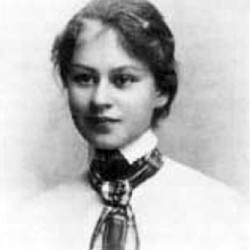
Wanda Dynowska, c. 1905
She read the great literary works, the “canon” of the era, and acquired an early interest in Bhagavad Gita, the Koran and the Bible. She was attracted to Theosophy at an early age because it offered “unlimited perspectives; life has neither beginning nor end, it is an everlasting creativeness, an inseparable attribute of the highest consciousness, God.” Dynowska remained interested in the human spiritual dimension throughout her life and studied world religions. For a while, she favored the Liberal Catholic Church in Poland.
She spent 1917 and 1918 in Russia, in the Crimea, making plans for the development of the Polish Theosophical Society, for which she translated J. Krishnamurti’s “At the Feet of the Master.” While in Russia, she spoke French with her colleagues, refusing on principle to speak Russian. Like her close friend, the English theosophist and social activist, Annie Besant, she espoused freedom of thought and speech, women’s rights, and national independence for nations controlled by imperial powers, among them Poland, Ireland and India. When Poland regained its independence in November 1918, she returned to Poland, hosted theosophists from the Paris Society, and undertook lectures on theosophy in towns throughout the country, attracting many members to the Society.
In 1925, together with the Polish general, Michal Karasiewicz-Tokarzewski, she created the Polish Federation of the Order of Universal United Mixed Freemasonry, a form of Freemasonry admitting both men and women that had its origins in France with Le Droit Humain. Dynowska’s lectures and meetings now took her across Europe, to Austria, Bulgaria, Czechoslovakia, France, Yugoslavia and Great Britain.
From the moment of her arrival in India, in 1935, Dynowska immersed herself in Indian life at many levels: spiritual, intellectual, social and political.
She studied yoga with Sri Ramana Maharishi and frequently returned to the holy mountain Arunchala where she was initiated into deeper levels of Hinduism, and made a pilgrimage to Ishwar Ashram in the Himalayas to study Kasmiri Saivism with Swami Lakshmanjoo.
She wrote prolifically on Hindusim, including poetry dedicated to her Hindu mentors and one to Maurycy Frydman, a Jewish Pole and a fellow theosophist whose Indian name was Bharatananda, and with whom she collaborated publishing the Polish-Indian Library for which she published books in Hindi, Tamil and English. Working with the Hindu poet Harischandra she worked on translation of Polish literature and poetry ranging from Kochanowski to the clandestine poetry of the Polish Underground in WWII.
She then launched her Indo-Polish Library with Peter Jordan’s book, “First to Fight.” In 1946, she co-authored “All for Freedom – the Warsaw Epic.” Her major work was, undoubtedly, the six-volume “Indian Anthology,” that included a volume titled Sanskrit, and in another one of her favorites, Kahlil Gibran’s Jesus.
Along with these literary undertakings she also wrote extensively for newspapers about the social conditions and the situation of the rural population, about the importance of instilling in children a love of their country, and about the tragic situation in Poland. To identify with the Indian population, she chose to travel third class on trains, something not done by white people.
Not surprisingly, her strong belief in the dignity of all people demanded acts, and not just words. She threw herself into helping the Polish refugees arriving in India during the war, not just by writing for the press but also involving herself in their lives. She especially wanted to ensure the children would learn something about their host country, arranging for some of the older ones entrance to Indian schools, engaging with the Scouts, and even took on the role of “impresario,” organizing a 3,000 kilometre tour for a fortunate few, financed by their public performances along the way. The trip was the subject of an article in the newspaper, Misindia, in Bangalore in which the young Poles were praised for their dancing which was compared to some dances of southern India, Kumni and Kilattem. It was said the Polish youth was there to learn about India and in turn to introduce something of Poland to the Indians they met, a dialogue between peoples so important to Umadevi.
Is it any surprise, then, that she was also a passionate supporter of Gandhi’s independence movement? In a collective memoir, a few Polish girls recalled carrying letters between Umadevi and Gandhi, no doubt to circumvent the censors. But this was a non-violent movement and one she could heartily support. It was an unforgettable experience for those who met the great man, one they considered the “father” of his country.
When Gandhi came to speak to a group of Polish youth, he expressed his sympathy for the terrible suffering that has been inflicted on their country and told them he prays for Poland. He told the young people that they must study and prepare to go back and help Poland be strong again. He also told them that they must forgive, for their own sake as well as for others. They must have courage, but this courage is to be directed to peaceful enterprises; violence will not gain them anything. He quoted from Christ’s teachings. The Polish youth expressed surprise that he knew this to which he replied that there is great wisdom in all the great religions; that is why he studied them and he respects them all highly. At a large public gathering, he said, “Never belittle another’s faith but instead encourage him to follow its teaching faithfully.”

Wanda Dynowska-Umadevi with a Tibetan girl. In the background is a Tibetan lama. Photographed on Feb. 5, 1962.
Years later, Umadevi was once again passionately supporting another wave of refugees, this time the Tibetans escaping from Chinese occupation of their country. She worked tirelessly, feeding them, dressing wounds, making clothes. She founded schools, introducing the Montessori method in early education, placed some older students in schools throughout India, and was instrumental in obtaining scholarships for many students to study in Switzerland. She spent a lot of time with the Dalai Lama and others in his circle, and published works on Mahayana Buddhism and other aspects of Tibetan culture. She felt that her experience as a Pole growing up under Russian occupation gave her an insight into the importance of preserving one’s culture.
And yet, she felt she had failed to do enough for the Tibetans, and that revived memories of the Polish tragedy. In the 1960s she traveled twice to Poland, where she met with Bishop Karol Wojtyła (later Pope John Paul II) and discussed with him the plight of the Tibetan people. While there, she meditated at Wawel Cathedral in Kraków.
In her final year she was no longer able to live at high altitudes. She returned to live in a convent in Delhi where she was cared for by some Tibetan girls. When she died, she received last rites from a Polish Catholic priest, and her funeral rites were performed by Tibetan lamas, true to her belief that all religions are one, containing within them the essential truth.
CR
Sources
- “Wanda Dynowska-Umadevi: A Biographical Essay” by Kazimierz Tokarski, translated by Anna Sowinska, Theosophical History: A Quarterly Journal of Research, Vol. V, No. 3, July 1994; Professor James A. Santucci, ed., Department of comparative Religion, University of California, Fullerton CA.
- The collective memoir, Polacy w Indiach, 1942-1948, and the archives of the Sikorski Museum in London.
Photos
By permission from Theosophical History
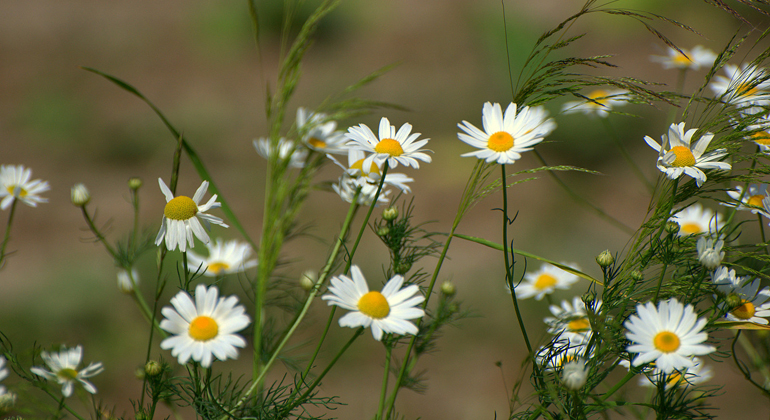
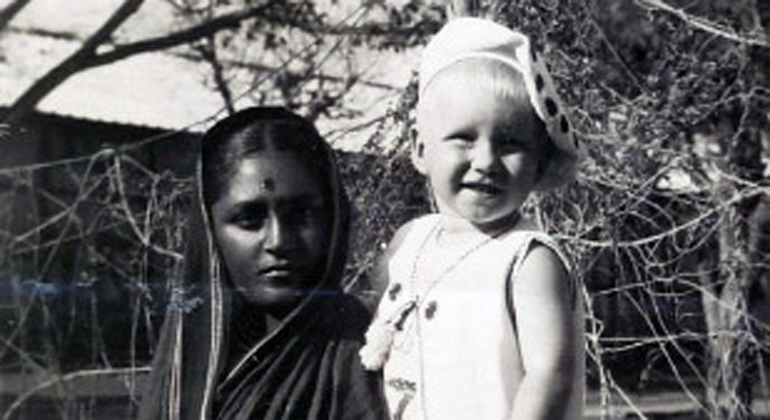
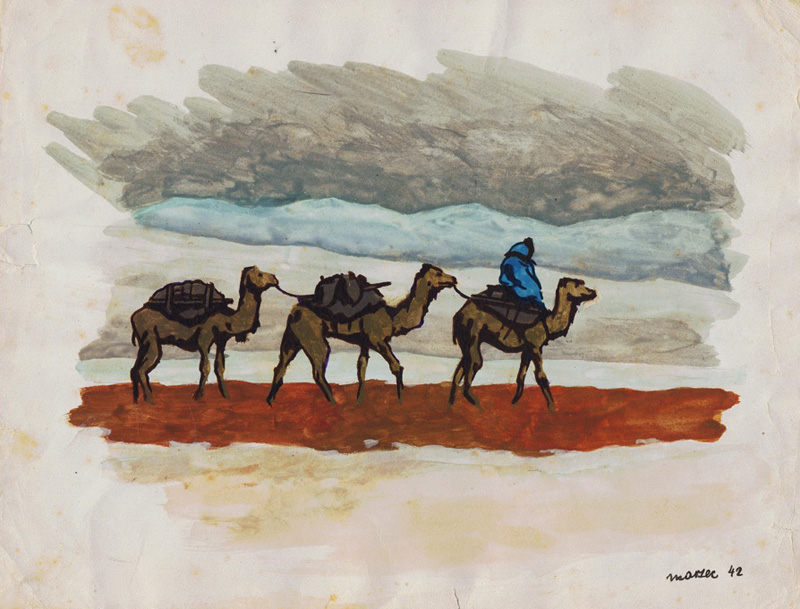

Pingback: ‘Wanda Dynowska / Umadevi: A Polish Guide to Indian Culture’ | World Solidarity
Excellent post. I certainly appreciate this website.
Continue the good work!
What a fantastic story. So inspiring, especially for women. We can be engaged in life and make a difference no matter where or who we are. Thank you Irene for your effort to bring alive this story with your writing.
This is so inspiring more so as I value the spiritual quest more than anything else. I wonder if there is anyone who is keeping her legacy intact here in India or Poland and taking it forward.